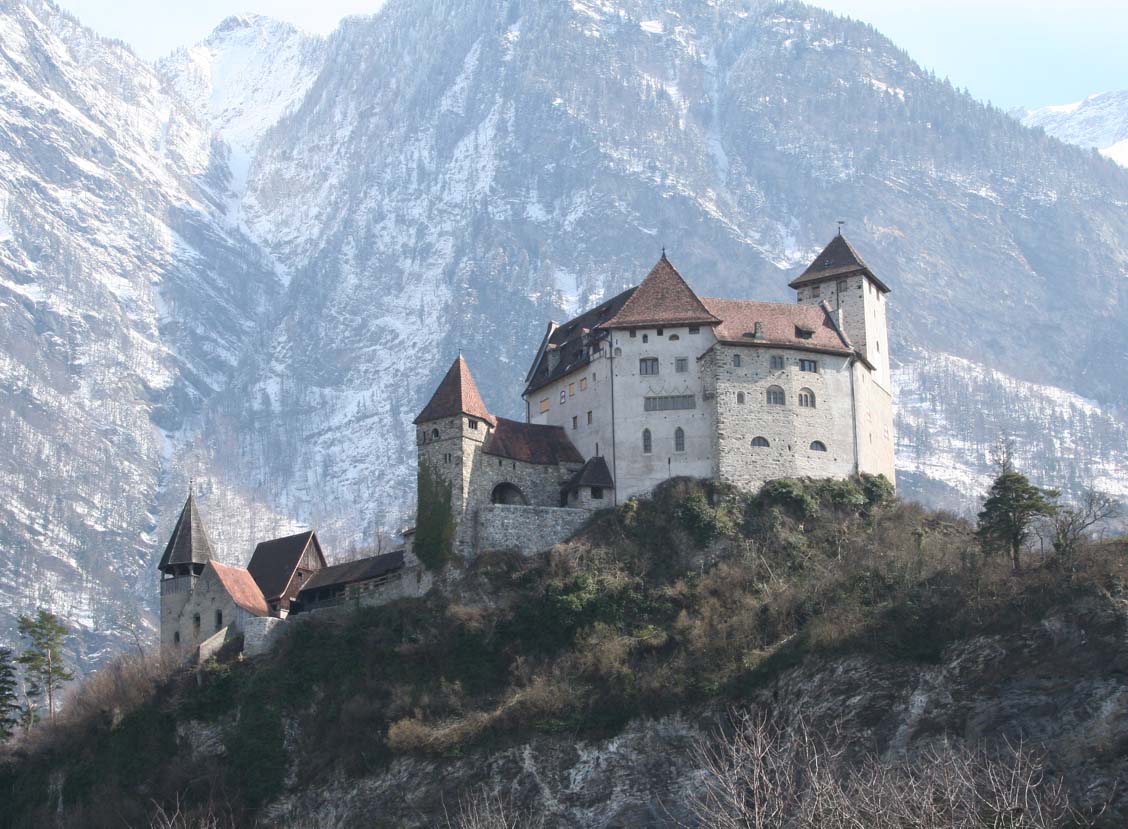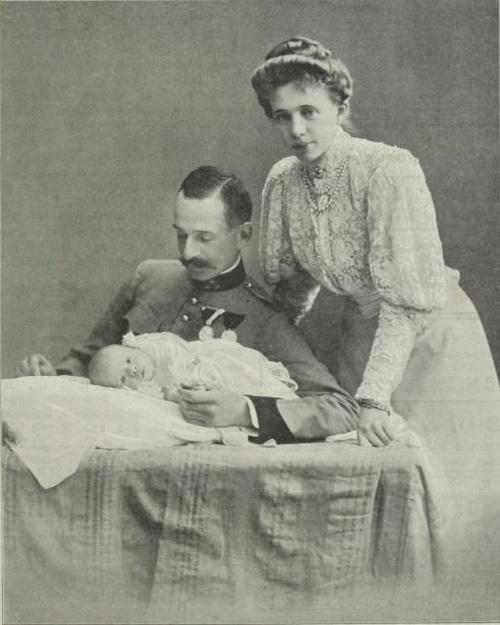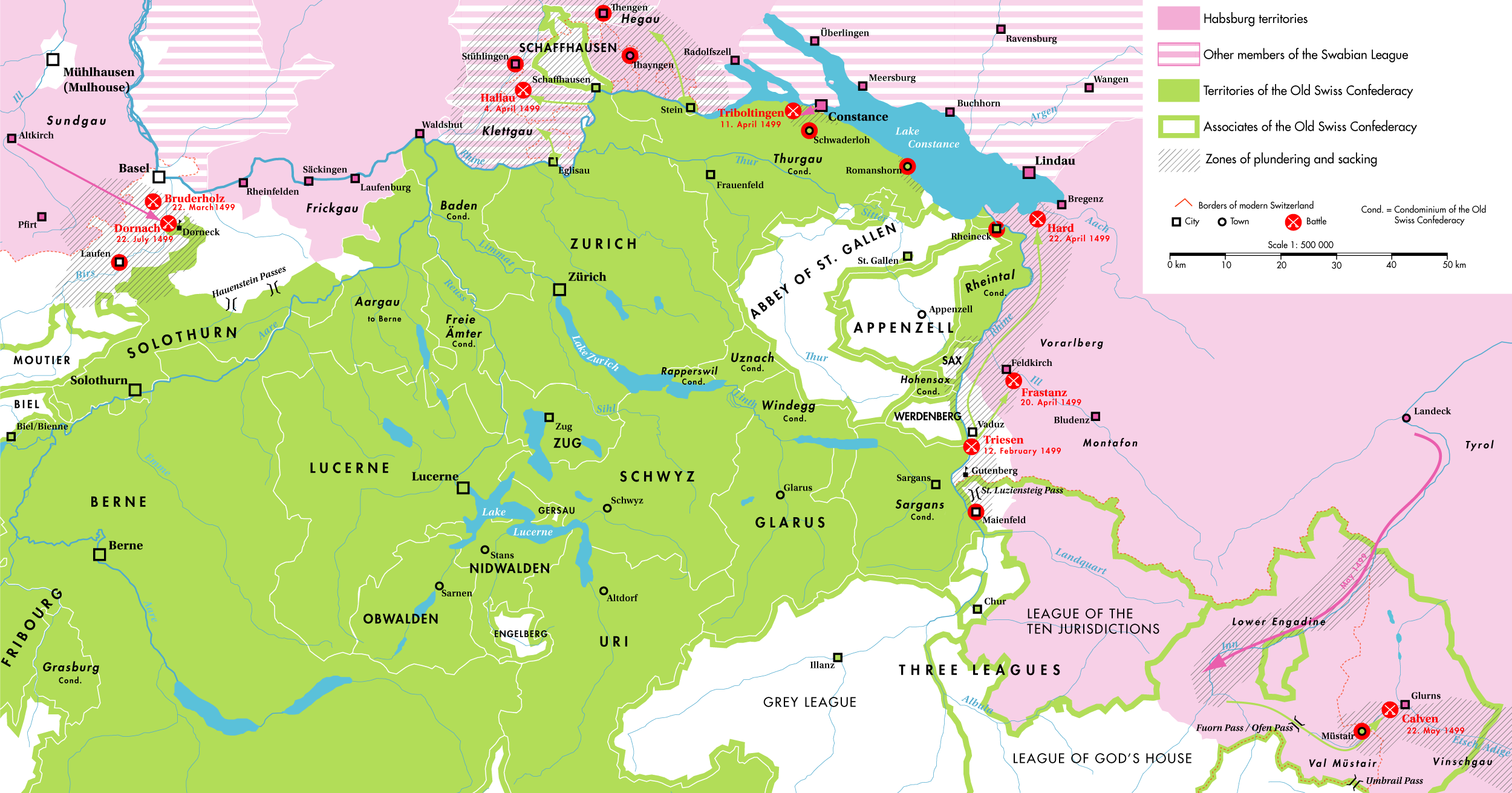|
Vaduz Castle
Vaduz Castle (German language, German: ''Schloss Vaduz'') is the palace and official residence of the Monarchy of Liechtenstein, Prince of Liechtenstein. The castle gave its name to the town of Vaduz, the capital of Liechtenstein, which it overlooks from an adjacent hilltop. History The former owners, who were presumably also the builders, were the counts of County of Sargans, Werdenberg-Sargans. The bergfried (the keep, built in the 12th century) and parts of the eastern side are the oldest. The tower stands on a piece of ground that is in area. At the ground floor, the tower walls have a thickness of up to . The original entrance lay at the courtyard side at a height of . The chapel of St. Anna was presumably built in the Middle Ages as well. The main altar is late-gothic. In the Swabian War of 1499, the castle was burned by the Old Swiss Confederacy, Swiss Confederacy. The western side was expanded by Count (1613–1640). The House of Liechtenstein, princely family of Liecht ... [...More Info...] [...Related Items...] OR: [Wikipedia] [Google] [Baidu] |
Palace
A palace is a large residence, often serving as a royal residence or the home for a head of state or another high-ranking dignitary, such as a bishop or archbishop. The word is derived from the Latin name palātium, for Palatine Hill in Rome which housed the Roman Empire, Imperial residences. Most European languages have a version of the term (''palats'', ''palais'', ''palazzo'', ''palacio'', etc.) and many use it to describe a broader range of buildings than English. In many parts of Europe, the equivalent term is also applied to large private houses in cities, especially of the aristocracy. It is also used for some large official buildings that have never had a residential function; for example in French-speaking countries ''Palais de Justice'' is the usual name of important courthouses. Many historic palaces such as parliaments, museums, hotels, or office buildings are now put to other uses. The word is also sometimes used to describe an elaborate building used for public ent ... [...More Info...] [...Related Items...] OR: [Wikipedia] [Google] [Baidu] |
Old Swiss Confederacy
The Old Swiss Confederacy, also known as Switzerland or the Swiss Confederacy, was a loose confederation of independent small states (, German or ), initially within the Holy Roman Empire. It is the precursor of the modern state of Switzerland. It formed at the end of the 13th century, from foundation of the Old Swiss Confederacy, a nucleus in what is now Central Switzerland, growth of the Old Swiss Confederacy, expanding to include the cities of Zurich and Bern by the middle of the 14th century. This formed a rare union of rural and urban medieval commune, communes, all of which enjoyed imperial immediacy in the Holy Roman Empire. This confederation of eight cantons () was politically and militarily successful for more than a century, culminating in the Burgundy Wars of the 1470s which established it as a power in the complicated political landscape dominated by Early modern France, France and the Habsburg monarchy, Habsburgs. Its success resulted in the addition of more con ... [...More Info...] [...Related Items...] OR: [Wikipedia] [Google] [Baidu] |
Tourist Attractions In Vaduz
Tourism is travel for pleasure, and the commercial activity of providing and supporting such travel. UN Tourism defines tourism more generally, in terms which go "beyond the common perception of tourism as being limited to holiday activity only", as people "travelling to and staying in places outside their usual environment for not more than one consecutive year for leisure and not less than 24 hours, business and other purposes". Tourism can be domestic (within the traveller's own country) or international. International tourism has both incoming and outgoing implications on a country's balance of payments. Between the second half of 2008 and the end of 2009, tourism numbers declined due to a severe economic slowdown (see Great Recession) and the outbreak of the 2009 H1N1 influenza virus. These numbers, however, recovered until the COVID-19 pandemic put an abrupt end to the growth. The United Nations World Tourism Organization has estimated that global international tourist ... [...More Info...] [...Related Items...] OR: [Wikipedia] [Google] [Baidu] |
Buildings And Structures In Vaduz
A building or edifice is an enclosed structure with a roof, walls and windows, usually standing permanently in one place, such as a house or factory. Buildings come in a variety of sizes, shapes, and functions, and have been adapted throughout history for numerous factors, from building materials available, to weather conditions, land prices, ground conditions, specific uses, prestige, and aesthetic reasons. To better understand the concept, see ''Nonbuilding structure'' for contrast. Buildings serve several societal needs – occupancy, primarily as shelter from weather, security, living space, privacy, to store belongings, and to comfortably live and work. A building as a shelter represents a physical separation of the human habitat (a place of comfort and safety) from the ''outside'' (a place that may be harsh and harmful at times). buildings have been objects or canvasses of much artistic expression. In recent years, interest in sustainable planning and building pract ... [...More Info...] [...Related Items...] OR: [Wikipedia] [Google] [Baidu] |
Valtice
Valtice (; ) is a town in Břeclav District in the South Moravian Region of the Czech Republic. It has about 3,600 inhabitants. It is known as part of Lednice–Valtice Cultural Landscape, a UNESCO World Heritage Site. The historic town centre is well preserved and is protected as an Cultural monument (Czech Republic)#Monument zones, urban monument zone. Administrative division Valtice consists of two municipal parts (in brackets population according to the 2021 census): *Valtice (3,353) *Úvaly (172) Geography Valtice is located about west of Břeclav and south of Brno. It lies on the border with Austria and borders the Austrian municipality of Schrattenberg. Valtice lies in the Lower Morava Valley lowland. The highest point is the hill Chrastiny at above sea level. History Valtice Castle, then part of Duchy of Austria and called Feldsberg, was probably founded in the 11th century. The first written mention of the village of Feldsberg is in a 1192 deed (as ''Veldesperch''); ... [...More Info...] [...Related Items...] OR: [Wikipedia] [Google] [Baidu] |
List Of Castles In Liechtenstein
This is a list of castles in Liechtenstein. *Gutenberg Castle, Balzers *Obere Burg (Burg Neu-Schellenberg), Schellenberg *Untere Burg (Burg Alt-Schellenberg), Schellenberg *Schalun Castle (Wildschloss), Vaduz *Vaduz Castle, Vaduz See also *List of castles References External links Overview of castles in the Principality of Liechtenstein(in German) {{Castles in Liechtenstein Castles in Liechtenstein, * Lists of castles in Europe, Liechtenstein Lists of castles by country Lists of tourist attractions in Liechtenstein, Castles Lists of buildings and structures in Liechtenstein, Castles ... [...More Info...] [...Related Items...] OR: [Wikipedia] [Google] [Baidu] |
Franz Joseph II, Prince Of Liechtenstein
Franz Joseph II (Franz Josef Maria Alois Alfred Karl Johannes Heinrich Michael Georg Ignaz Benediktus Gerhardus Majella; 16 August 1906 – 13 November 1989) was the reigning Monarchy of Liechtenstein, Prince of Liechtenstein from 25 July 1938 until his death in November 1989. Franz Joseph was the son of Prince Alois of Liechtenstein (1869–1955), Prince Alois of Liechtenstein and Archduchess Elisabeth Amalie of Austria. He succeeded his childless grand-uncle, Franz I of Liechtenstein, Prince Franz I, after his father renounced his right of succession in his favour in 1923. He was an extremely popular sovereign in Liechtenstein. He was the first ruling prince to live full-time in the principality. He also oversaw the economic development of Liechtenstein from a poor agricultural backwater into one of the richest countries (per capita) in the world. Early life Franz Joseph was born on 16 August 1906 in Frauenthal castle, Schloss Frauenthal, Deutschlandsberg, Austria-Hungary a ... [...More Info...] [...Related Items...] OR: [Wikipedia] [Google] [Baidu] |
Johann II, Prince Of Liechtenstein
Johann II (Johann Maria Franz Placidus; 5 October 1840 – 11 February 1929), nicknamed the Good (), was Prince of Liechtenstein from 12 November 1858 until his death in 1929. His reign of 70 years and 91 days is the third-longest of any sovereign monarch in European history, after those of King Louis XIV and Queen Elizabeth II respectively, and List of longest-reigning monarchs, fourth-longest overall for which exact dates are known (after King Louis, Queen Elizabeth, and King Bhumibol Adulyadej respectively). Early life Johann II was the elder son of Aloys II, Prince of Liechtenstein and Countess Franziska Kinsky of Wchinitz and Tettau. He ascended to the throne shortly after his 18th birthday. Until he was surpassed by Elizabeth II on 9 May 2022, his reign had been the longest precisely documented tenure of any European monarch since antiquity in which a regent (that is, a regent serving in place of an underage sovereign) was never employed. Although his mother acted as his ... [...More Info...] [...Related Items...] OR: [Wikipedia] [Google] [Baidu] |
Schellenberg
Schellenberg (; dialectal: ''Schällabärg'') is a municipality in the lowland area of Liechtenstein, on the banks of the Rhine. , it has a population of 1,107 and covers an area of History Early history The area was first settled by Celts, then by Rhaetians. Rome conquered the area in 15 BC, and made it part of the province of Rhaetia. The Province later became a county (countship) under Charlemagne. The county was repeatedly divided among heirs. The Lordship of Schellenberg was purchased by the Counts of Vaduz in 1437 and the two states have been united in fact ever since. After the Swabian War in 1499, both came under Austrian suzerainty. Different dynasties of counts bought and sold them, until their purchase in the early 18th century by the Liechtenstein dynasty, which had been granted princely status in 1706, but which needed to acquire a territory with imperial immediacy in order to vote in the Diet of the Princes of the Empire. The emperor formally united Vaduz and Sch ... [...More Info...] [...Related Items...] OR: [Wikipedia] [Google] [Baidu] |
Charles VI, Holy Roman Emperor
Charles VI (; ; 1 October 1685 – 20 October 1740) was Holy Roman Emperor and ruler of the Austrian Habsburg monarchy from 1711 until his death, succeeding his elder brother, Joseph I, Holy Roman Emperor, Joseph I. He unsuccessfully War of the Spanish Succession, claimed the throne of Spain following the death of his relative, Charles II of Spain, Charles II. In 1708, he married Elisabeth Christine of Brunswick-Wolfenbüttel, by whom he had his four children: Archduke Leopold Johann of Austria, Leopold Johann (who died in infancy), Maria Theresa, Archduchess Maria Anna of Austria (governor), Maria Anna (Governess of the Austrian Netherlands), and Maria Amalia (who also died in infancy). Four years before the birth of Maria Theresa, faced with his lack of male heirs, Charles provided for a male-line succession failure with the Pragmatic Sanction of 1713. The Emperor favoured his own daughters over those of his elder brother and predecessor, Joseph I, in the succession, ... [...More Info...] [...Related Items...] OR: [Wikipedia] [Google] [Baidu] |
House Of Liechtenstein
The House of Liechtenstein (), from which the principality takes its name, is the family which reigns by hereditary right over the principality of Liechtenstein. Only Dynasty#Dynast, dynastic members of the family are eligible to inherit the throne. The dynasty's membership, rights and responsibilities are defined by a law of the family, which is enforced by the Prince of Liechtenstein, reigning prince and may be altered by vote among the family's dynasts, but which may not be altered by the Politics of Liechtenstein, Government or Parliament of Liechtenstein.Princely House of Liechtenstein. House Laws' History The family originates from Liechtenstein Castle in Lower Austria (near Vienna), which the family possessed from at least 1136 to the 13th century, and from 1807 onwards. The progenitor Hugo von Liechtenstein (d. 1156) built Liechtenstein Castle around 1122-36 on a fief that he received from the Babenberg margraves of Austria. He also received Petronell-Carnuntum, Petrone ... [...More Info...] [...Related Items...] OR: [Wikipedia] [Google] [Baidu] |
Swabian War
The Swabian War of 1499 ( (spelling depending on dialect), called or ("Swiss War") in Germany and ("War of the Engadin" in Austria) was the last major armed conflict between the Old Swiss Confederacy and the House of Habsburg. What had begun as a local conflict over the control of the Val Müstair and the Umbrail Pass in the Grisons soon got out of hand when both parties called upon their allies for help; the Habsburgs demanding the support of the Swabian League, while the Federation of the Three Leagues of the Grisons turning to the Swiss '' Eidgenossenschaft''. Hostilities quickly spread from the Grisons through the Rhine valley to Lake Constance and even to the Sundgau in southern Alsace, the westernmost part of the Habsburg region of Further Austria.The main references used are Morard in general and Riezler for the detailed chronology in the section on the course of the war. Many battles were fought from January to July 1499, and in all but a few minor skirmishes, th ... [...More Info...] [...Related Items...] OR: [Wikipedia] [Google] [Baidu] |








